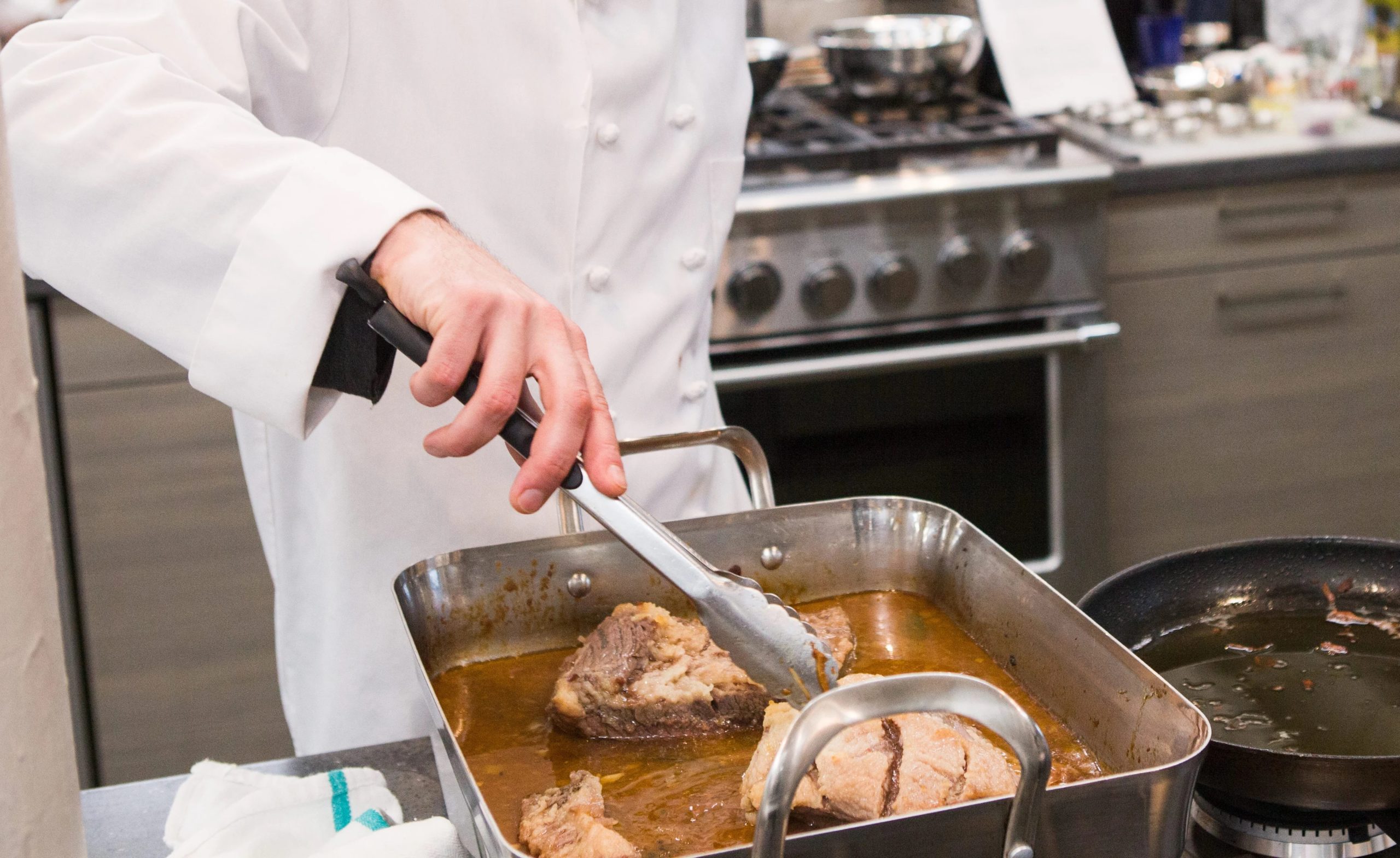While people who celebrate Passover eat slowly braised brisket with sweet onions and carrots, others enjoy it with a lot more flavor profiles. Popular methods in the US include marinating the meat, rubbing with a spice rub, cooking slowly over charcoal or wood heat, and more. In practice, this is a form of smoking the meat. Burnt ends are also popular, and the traditional New England boiled dinner also includes brisket as the main course.
Brisket Can Be Cooked in Many Ways
Whether it is baked, boiled, or roasted, brisket is a tough cut of meat that should be cooked with care to ensure perfect tenderizing. It overlies the sternum, ribs, and connects the costal cartilages and is one of the nine beef primal cuts. Here are four other interesting and less-known facts about brisket.
The Brisket — a Pectoral Muscle Rich In Protein

Cows have hefty pectoral muscles, and the Brisket is cut precisely from those. It can generally weigh from 12-20 pounds.
The Brisket Has a Lot of Connective Tissue and Has to Be Cooked Longer

The brisket is essentially one of the toughest muscles of the cow, and as such, it has a lot of tough connective tissue. That is why it should be cooked using low heat for a long period of time. This low and slow cooking allows for the tissue to break down and ensures ultra-tender results.
The Brisket Has a Secret Deckle Butchers Usually Keep for Themselves

Because it is rather large, butchers often cut the brisket into two pieces, and most grocery stores carry the first cut, which is also called the flat. It’s leaner and allows for better, neat slices. Often, the butcher may have the second cut, known as the deckle point. It has more fat marbling and falls apart when cooked.
The Cut of the Brisket Matters Depending on the Goal of the Cook
There are two widely familiar ways to cook brisket, and those are smoking and braising. The two result in very different tastes, so using the correct cut is crucial. Smoked brisket is made much easier and tastes better when the cook uses the second, fattier cut. This allows the brisket to remain juicy after spending hours in the smoker. Braised brisket is usually made from the first cut, and that, too, allows it to retain more moisture. Braised brisket tends to be dry, which is why it might be a good idea to use the deckle point for it. While it may fall apart when sliced, it’ll still be moist and succulent.
Brisket Has Many Additional Health and Nutritional Benefits

According to researchers, beef brisket contains plenty of oleic acids, which produces high levels of HDLs, which is the good kind of cholesterol. In addition to producing HDLs, oleic acid lowers the risk of heart disease. In addition to fat and protein, brisket is a significant source of multiple vitamins from the B group, including B12, B6, riboflavin, and niacin, which are used by the body for efficient energy metabolism. Brisket also contains high concentrations of minerals like iron, phosphorus, selenium, and zinc. Apparently, beef brisket also improves the digestive system’s ability to absorb iron from plant foods.
One thing is certain, brisket is definitely crucial for people who strive to maintain a diverse, healthy diet, and its rich flavor makes it the preferred choice for many Americans.
